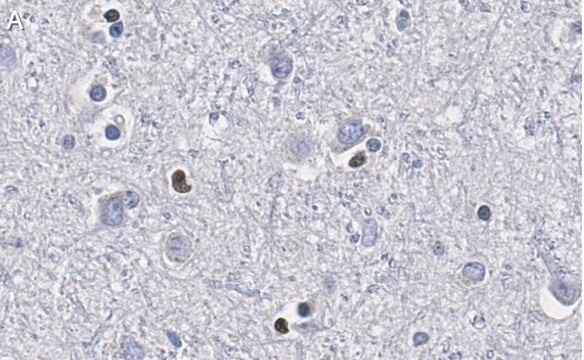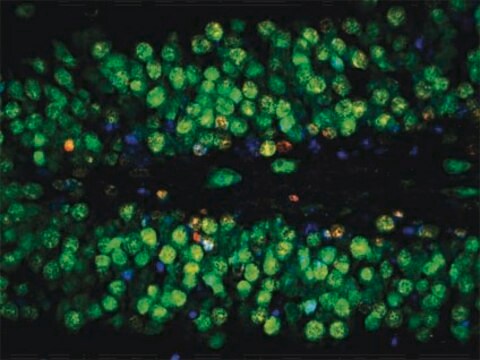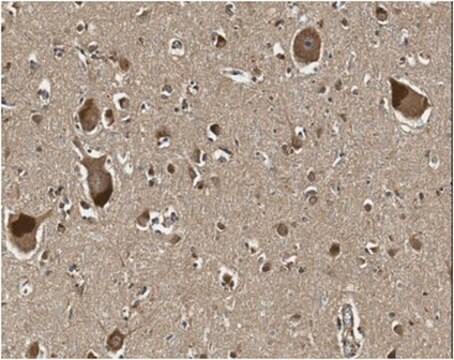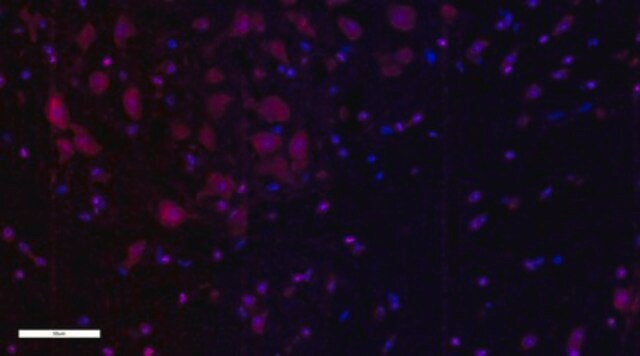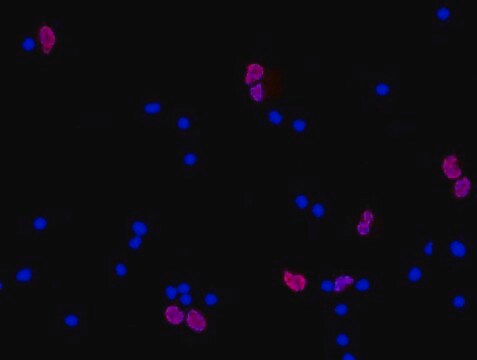MABN50A4
Anti-Olig2 Antibody, clone 211F1.1, Alexa Fluor™488 Conjugate | MABN50A4
clone 211F1.1, from mouse, ALEXA FLUOR™ 488
Sinônimo(s):
Oligodendrocyte transcription factor 2, Oligo2, Class B basic helix-loop-helix protein 1, bHLHb1, Class E basic helix-loop-helix protein 19, bHLHe19, Protein kinase C-binding protein 2, Protein kinase C-binding protein RACK17
About This Item
Produtos recomendados
fonte biológica
mouse
Nível de qualidade
conjugado
ALEXA FLUOR™ 488
forma do anticorpo
purified immunoglobulin
tipo de produto de anticorpo
primary antibodies
clone
211F1.1, monoclonal
reatividade de espécies
rat, mouse
reatividade da espécie (prevista por homologia)
human (based on 100% sequence homology)
técnica(s)
immunocytochemistry: suitable
Isotipo
IgG2a
nº de adesão NCBI
nº de adesão UniProt
Condições de expedição
wet ice
modificação pós-traducional do alvo
unmodified
Informações sobre genes
human ... OLIG2(10215)
Descrição geral
Imunogênio
Aplicação
Neuroscience
Developmental Neuroscience
Qualidade
Immunocytochemistry Analysis: A 1:100 dilution of this antibody detected Olig2 in rat oligodendrocyte precursor cells.
Descrição-alvo
forma física
Armazenamento e estabilidade
Nota de análise
Rat oligodendrocyte precursor cells
Informações legais
Exoneração de responsabilidade
Não está encontrando o produto certo?
Experimente o nosso Ferramenta de seleção de produtos.
Código de classe de armazenamento
12 - Non Combustible Liquids
Classe de risco de água (WGK)
WGK 2
Ponto de fulgor (°F)
Not applicable
Ponto de fulgor (°C)
Not applicable
Certificados de análise (COA)
Busque Certificados de análise (COA) digitando o Número do Lote do produto. Os números de lote e remessa podem ser encontrados no rótulo de um produto após a palavra “Lot” ou “Batch”.
Já possui este produto?
Encontre a documentação dos produtos que você adquiriu recentemente na biblioteca de documentos.
Nossa equipe de cientistas tem experiência em todas as áreas de pesquisa, incluindo Life Sciences, ciência de materiais, síntese química, cromatografia, química analítica e muitas outras.
Entre em contato com a assistência técnica

